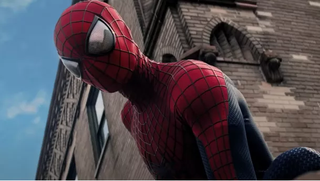Arnold Blumberg first taught a class built around the Marvel Cinematic Universe (MCU) in 2015 and has been teaching courses based on other aspects of pop culture for years. Even so, some educators still see incorporating popular media into the classroom as some type of radical approach.
“It still seems like we occasionally fight an uphill battle, where people either are definitely against the idea or at the very least incredulous that these kinds of things can work,” says Blumberg, a pop culture and comics historian and part-time professor at the University of Maryland, Baltimore County. “I feel like we're at a point now where this shouldn't have to be something that's proven anymore. It works. It's a wonderful strategy for getting students active and engaged and thinking.”
Many educators are already referencing Marvel movies and other elements of pop culture in the classroom. Here are some of the reasons Blumberg believes more should consider it as a pedagogical strategy.
1. Teaching the Marvel Cinematic Universe: Popularity Builds Engagement
Spider-Man: No Way Home was the highest-grossing film of 2021 and the most successful movie of the pandemic era, clearly demonstrating the MCU’s hold on humanity is not loosening. Educators can use this popularity – as well as other popular films and sources – to get students to engage more deeply with class concepts, Blumberg says.
“One of the most powerful things about it is you're giving your students a sense of comfort and familiarity,” he says. “And then once you've started from there, you can say, ‘Oh, but see how you can also see this in that?’ Or, ‘What do you think this means?’”
He adds that incorporating popular material into class can work on multiple levels. “It gets the students interested because those are things they're going to be comfortable with or enjoy. But it also means, 'Let's take a look at something that is clearly drawing in millions of viewers. Why is that? What is it that's resonating with them? And also, what is it that it might be telling them while they're sitting there passively receiving all this information?’”
2. Teaching the Marvel Cinematic Universe: It is Perfect for Media Literacy and Literature
The massive interest in the MCU makes it a good starting point for media literacy courses as well as composition courses. “On a certain level, the content is irrelevant,” Blumberg says. “It doesn't matter whether it's Marvel or whatever else you use. It's simply a good idea to pick things that people will have an affinity for, that are popular in the moment, that are clearly things that are drawing in a wide audience.”
Blumberg has also built courses around zombie cinema and zombie references in popular media. In his Marvel classes he introduces students to the comics the film characters are based on, and discusses their similarities to mythology and delves into topics such as the hero’s journey.
Educators can also explore messaging and what a film or story reveals about society whether intentionally or unintentionally. For example, the recent MCU WandaVision Disney+ TV series delves into dealing with grief and trauma, while The Falcon and Winter Soldier explores racism and social inequality. Spider-man’s mantra “With great power comes great responsibility,” which can be traced back to the Sword of Damocles, speaks to notions of public service and the greater good.
A pop-culture approach to teaching media literacy is all about “giving students the opportunity to learn how to view the things that they view for entertainment, and derive meaning from them in a substantive way,” he says.
3. Teaching the Marvel Cinematic Universe: It Works Across Topics
Even for subjects in which the MCU or other pop culture content is not as clear a fit, there can still be reasons to sneak in a reference or two to help with student engagement.
“Even in disciplines that may not use that on a regular basis, it's a tool in the toolbox,” Blumberg says. “It's an excellent way for you to get to another point you want to make, and it can be a powerful way to get students engaged. Frankly, a lot of material can be tedious, it can be opaque to people, depending on what the students' mindsets are like.”
On top of this, students have a great deal on their minds beyond school. “The reality of it is kids are sitting through class after class,” Blumberg says. “They're tired, they want to eat. Anything you can do that might make them feel a little more engaged, a little more comfortable, and more willing to participate, is a good thing.”
4. Teaching the Marvel Cinematic Universe: Today’s Classics Were Yesterday’s Pop Culture
While some educators might still look down on teachers who use the MCU and other pop culture content in class, it’s important to remember that much of what we teach is based on what was popular in the past. “You see these kinds of articles come up time and again. It's like, ‘Oh what are these people doing teaching pop culture?’” Blumberg says. “We've always been teaching pop culture. Most of the things that we think of as being a classic canon are only that because of age, and because a very, very narrow group of largely white men in academia decided what's going to be important and what's not going to be not important. And it's time to throw a lot of that away.”
While Blumberg says it's great to encourage students to explore classic literature and films – and he does that in his classes as well – those are not the only types of media students should be encouraged to engage with. “It's just the tip of the iceberg,” he says. “There's a vast range of material. And just because something is popular, doesn't mean it's not important, or that it doesn't have meaning. And just because something's not in the academic canon doesn't mean it isn't worth academic notice.”

